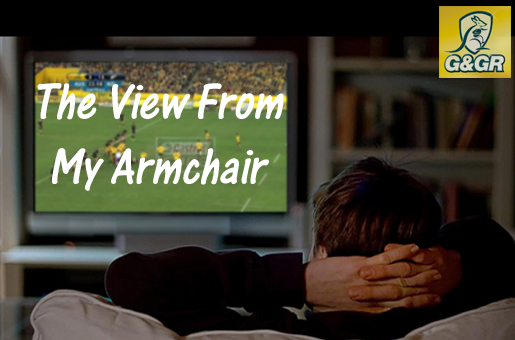We’re all armchair critics and we all see different things in matches. Often the things I see watching a game live are not the same as when I do my match analysis. Here’s what I saw in the match between the Brumbies and Reds last weekend. The accompanying video highlights some of the areas discussed here.
The Reds and Brumbies’ battle for supremacy at the top of the Australian conference in 2012 produced close, hard-fought matches and the determination of the final ladder positions went right down to the wire. There was no reason to think their first clash in 2013 would be any different and while the eventual score line of 24-6 looks comfortable for the Brumbies, it doesn’t reflect the real arm wrestle that the game was.
The Brumbies did everything just that little better and the cumulative effect of all those little things meant that they were the better team on the night.
Defence was always going to be a focus for both teams in this match. The raw statistics tell us that the Reds were the better defensive team – missing only 14 tackles for a completion rate of 91 per cent while the Brumbies missed 23 for a rate of 86 per cent. Of course, those numbers vary slightly dependent on whose statistics you look at. But the raw numbers never tell the full story and the Brumbies scrambled really well to cover their initial missed tackles. I thought the Brumbies actually exerted more pressure on the Reds with their defence and the Reds never looked like scoring. Having said that, there was no issue with the Reds’ defence and while the Brumbies scored two tries neither came as a result of the Reds defensive line opening up.
The other area where there was a fierce battle was the breakdown where both teams threw numbers into the contest in an effort to secure their own ball or to slow down the delivery of the opposition ball. Both teams achieved six turnovers at the breakdown and I thought Liam Gill matched David Pocock.
The contests in defence and at the breakdown are important in any match. Both teams appeared to cancel each other out in these areas but I thought the Brumbies gained the edge in the match by not allowing the Reds to play the game that suits them best – attacking rugby built on quick delivery of the ball from the ruck.
In 2011 when the Reds were such a strong attacking force, 26 per cent of their ruck ball during the season was quick and off the back of that they played some wonderful, attacking rugby. In this match the Brumbies were able to restrict the Reds to only 18 per cent quick ball from the ruck. Combined with excellent line speed the Brumbies were able to limit the opportunities for the Reds to attack and as a result the Reds were forced to kick for field position in the hope of forcing the Brumbies into errors in their own half. Of course that field position game is exactly what suits the Brumbies, with Nic White and Jesse Mogg gaining massive metres with their kicking game.
I thought the selection of Aidan Toua at outside centre signalled the Reds wanted to attack a little wider and use Toua’s pace and footwork to put pressure on the Brumbies’ defence, but if that was part of the game plan, the Brumbies did a great job of denying the Reds the opportunity to implement it.
As well as good defence in general play the Brumbies really attacked the Reds ball at source, from scrums and lineouts. Of 19 scrums and lineouts the Reds had in the match they only got clean ball to launch first phase attack from 42 per cent of those set pieces. When you consider that 75 to 80 per cent of most teams’ possessions in Super Rugby (and the Reds’ statistics are no different) last three phases or less, it’s very hard to play attacking rugby without good first-phase ball to establish a platform – there is very limited time with the ball in hand and if your first phase attack is nullified, you end up kicking the ball away and hoping to launch something the next time you have possession. The Brumbies went into the match with a clear plan to disrupt the Reds’ possession and they combined a strong scrum with aggressive defence in the lineout.
The Reds’ overall game in attack seemed to be lacking direction and spark and while the pressure from the Brumbies and the absence of Will Genia explains some of that, I was surprised that the Reds kept grinding away and really didn’t look to chance their arm until the game was probably out of reach in the final ten minutes.
[youtube id=”xZcLp42H9uU” width=”600″ height=”350″]
Best for the Brumbies were Jesse Mogg, Ben Mowen and Stephen Moore, while Liam Gill, Ed Quirk, Quade Cooper and Ben Tapuai were the best for the Reds.
The Brumbies will go into this week’s match against the Rebels full of confidence and apart from the forced change with Henry Speight out I wouldn’t imagine other changes to their team. I expect them to get up in this match.
The Reds have a harder task against the Waratahs. They need the likes of James Horwill and Radike Samo back in the pack to provide some go-forward and leadership, although Horwill has already been ruled out for another week. I’d bring James Hanson off the bench to start ahead of Saia Faingaa while the return of Anthony Faingaa, who will probably take over the captaincy, will be a big boost for the Reds.
Forced to make a decision I’ve tipped the Waratahs — but for those G&GR Tahs supporters coming up to Brisbane for the match whom I’ll be catching up with, just remember that tipping is one thing; I certainly won’t be backing them.

